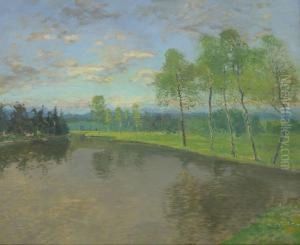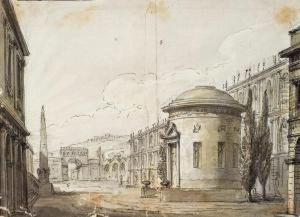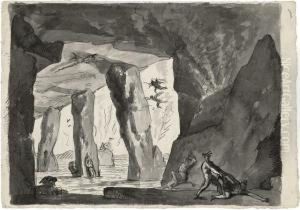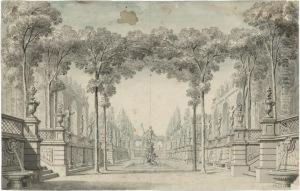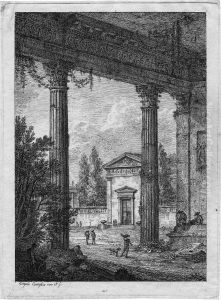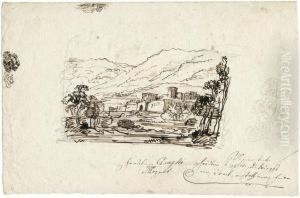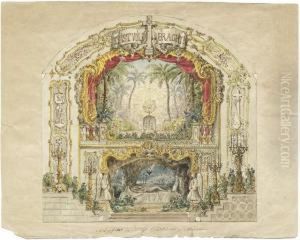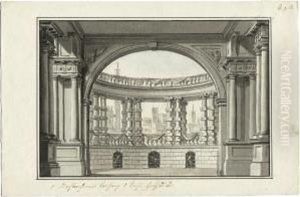Angelo I Quaglio Paintings
Angelo I Quaglio was an Italian painter, part of the extensive Quaglio dynasty of Italian artists from the Lombardy region. He was born into a family that had a strong tradition in art, particularly in theater decoration, architecture, and landscape painting. His father, Giuseppe Quaglio, was a distinguished painter and his brothers, Lorenzo I, Giovanni, and Giulio Quaglio were also accomplished in the field of art, which provided a fertile environment for Angelo's development as an artist.
Angelo Quaglio specialized in architectural painting, a genre that focuses on the depiction of buildings and interior designs with accurate perspective and detailed rendering. He was particularly known for his skill in creating the illusion of three-dimensional space on a flat surface, a technique that made him a sought-after artist for theater set designs. His work contributed to the scenic designs for theaters not only in Italy but also in other parts of Europe, such as Germany, where he was active for a period of his career.
Despite his premature death at the age of 37, Angelo Quaglio left a significant mark in the field of set design and architectural painting. His legacy continued through his family, with the Quaglio name remaining prominent in European art for several generations. The Quaglio family members were influential in the development of scenography, the art of creating stage designs, and were instrumental in the transition from the Baroque to the more realistic styles of the 19th century in theater and visual arts. Angelo's artistic heritage, characterized by precision in perspective and a clear, realistic approach to depicting architecture, provided inspiration for future artists in the realm of theatrical and architectural representation.
